With the food to go mission becoming saturated by fierce competition, retailers are looking to new areas to boost sales across categories.
With a number of eateries dotted around the same street, along with four cafés and sandwich shops, retailer Barrie Seymour, owner of a Londis store in Liversedge, is not short of competition in his West Yorkshire town.
“We tried food to go for 12 months. We persevered and we invested a lot of money into making it work, but in the end it failed,” Barrie explains.
“It was very labour intense and we lost out to the local trade that has been serving breakfast and lunch to residents for a longer time than us. After realising that we were going for a customer base that was already loyal elsewhere, we decided to invest in different areas of food to go.”
Barrie instead concentrated on looking for a point of difference. He now has a Rollover hot dog cabinet that serves fresh, warm snacks that can be combined with crisps and a drink, something that you won’t get anywhere else close by, and priced competitively at £2.99, so he still gets a good share of the lunchtime and snacking trade.
According to HIM Research & Consulting’s food-to-go study in 2016, the convenience channel is losing out to competing industries with the emergence of new competition and innovators in the market. The likes of food delivery services such as UberEATS and Deliveroo. along with new food-to-go players and specialists, have been growing in prominence over the past few years and taking a bite of the market.
The HIM study found that the value of the food-to-go mission in the convenience channel in 2016 saw a slight decline in footfall, with 894 million food-to-go trips to store in 2016, down 181 million trips year on year.
Kay Patel owns six Best-one stores in East London and has identified key competitors in his location. “Growth is stagnating a bit as the market gets over-crowded. We have Westfield shopping centre around the corner, with a number of coffee franchises and fast food outlets inside or nearby.”
Kay has responded by refitting his stores, to good effect. “Over the past two years we have seen a 20% increase in food-to-go sales by making more room for it and expanding the range thanks to our suppliers, Bestway, helping us to gain more of the market by sourcing even more great options for us,” he says.
Kay isn’t the only retailer investing in store improvements to boost food to go. The Association of Convenience Stores’ Local Shop report found that store owners spent almost £300m on store improvements in the last three months of 2016, with indications that food to go has been driving investment.
That £300m may be money well spent as IGD predicts that the UK food-to-go market will grow up to 35% by 2021 to be worth £21.7bn, representing a big opportunity for retailers who get it right and tap into growing areas.
IGD senior retail insight manager Gavin Rothwell says: “One area where we are seeing more growth is in targeting more flexible consumption patterns. Targeting alternative ‘missions’ therefore lies at the heart of the opportunity. Breakfast is perhaps the most obvious mission here, and we expect the focus of various retailers and specialists to continue to fall on this mission.”
Aberdeenshire retailer Scott Graham, owner of McLeish, in Inverurie, dedicates 30% of his 1,500sq ft store to freshly prepared food for breakfast, lunch and snacking missions.
He says: “We offer a range of hot and cold food, freshly-prepared every morning and afternoon. We have extended our offering to address more meal times and missions within the food-to-go mission.
“We do very well from our fresh breakfast offer of breakfast pastries, muffins and rolls. They are quick to grab and go and can be combined with a coffee from our Tchibo machine for a breakfast meal deal.
“We sell out nearly every day, so there is very little waste, and our sales from the missions continue to grow. While that growth has slowed, it still continues to increase by 5-10% each year.”
A well-stocked breakfast fixture beside the coffee machine, preferably promoting a link deal, is an absolute must, says Stephen Clifford, head of marketing at Country Choice.
“Within hot beverages, two-thirds are coffee, a quarter tea and the balance hot chocolate, and sales of these products need to be linked to popular food items like breakfast baps, savouries such as bacon and cheese turnovers and sausage rolls, and continental pastries, with the latter often being overlooked these days,” he says.
He adds that it is important to remember that breakfast starts very early, 6am for many stores, and continues into mid-morning with the lunchtime trade now starting at around 11am.
He continues: “Retailers must be sure that their offer reflects this. Here, the meal deal is likely to comprise a soft drink, sandwich or salad and either crisps or fruit, occasionally even a sweet treat such as a cake bar.
“It is also worth noting that about 40% of sandwiches are bought outside of the traditional lunch period of 12pm to 2pm, so mid-morning to mid-afternoon availability is key to maximising sales, as is merchandising.”
Clifford recommends retailers position sandwiches and drinks side-by-side in the chiller, with a shelf talker carrying a meal deal message. He points out that this can work with hot drinks, too, by partnering them with a sweet treat item where a snacking deal can be communicated, linking a wrapped sweet item with a coffee or tea.
Meal deals
According to HIM, meal deals are very important as they communicate value to customers. It found that 37% of shoppers compare prices when on a food-to-go mission, while 77% say price is important when they visit a convenience store.
According to Shoppercentric data, the promotional mechanic most commonly associated with food-to-go is the meal deal. More than 70% of food-to-go shoppers say that they like the assurance of knowing the total cost of the meal, and more than half say that they look out for a meal deal when they consider buying food to go.
Scott agrees with the findings. He says: “First and foremost, customers want something tasty and fresh and second most important is price. They don’t want to spend more than £5 on their breakfast or lunch, so pricing is key.”
Jag Purewal, owner of Spar Romsley and Spar Stourbridge in the West Midlands, reports that food to go makes up somewhere between 15-18% of his store’s sales each year, and he says that this is down to getting the price and the offer right.
“I would never charge more than £4 for a meal deal in my store, because I know our customers well and I know that they would find that too steep,” Jag says. “We know that some customers are happy to come in and buy one item from the hot food-to-go cabinet, or just a sandwich from the chiller, but many will pick up an extra food item and a drink because of our meal deals, as they represent good value.”
Jag uses POS material on a hot food-to-go cabinet, along with shelf talkers across his chillers.
“In as few words as possible we communicate the message to customers that they can save money and build their lunch or breakfast up. We offer different combinations from £2 up to £3.50. All of our crisps and bottled and canned drinks are big brands that have a trusted reputation, such as Walkers crisps, Cadbury’s chocolate and Coca-Cola.
“By having these items positioned by the chillers underneath in baskets and again at the till point acts a final reminder, we find this a good way to increase basket spend,” explains Jag.
Scott has been innovating with his lunchtime offer to attract new customers to the store. “When it is really cold out, we notice a lot more customers coming in wanting something warm such as a hot sausage roll or something, so we make fresh soup to give them even more choice. We see that this attracts new customers.
“Alternatively, in the summer, we don’t stock soup, but instead do more freshly-prepared salads and this again will attract more new customers.
“Sometimes it is about giving customers something new and exciting to keep them interested.”
Maintain interest
Keeping the food-to-go shopper interested is seen as key as the market does become more competitive, and retailers may need to look to other territories to get a larger slice of the market, according to Rothwell.
He says: “We’re expecting a broader focus on alternative missions at different times of day. Some of this might be evening meal options, but other elements might be less rigid or less defined snacking occasions - for example, with products better tailored to target the post-gym energy boost, or the post-work snack.”
Leading snack manufacturers have been busy innovating with NPD driven by this mission. Tracy Southwell, out-of-home commercial controller at Florette, says: “Retailers can drive footfall and improve their food-to-go offering by stocking healthy, convenient meal solutions, such as Florette’s Tasty & Balanced protein salad. The high-protein, low-carbohydrate one-person salad bowl includes a portion of protein and comes complete with a dressing, sprinkle sachet and fork. Consumers have the choice of two flavours - tuna & sweetcorn and sweet chilli chicken - under 180 kcals per serving.”
Scott tells C-Store that snacking is an area of food to go that he is expanding. “The area for us that has the biggest growth potential is snacking. Because people have less than 20 minutes on average to eat lunch or breakfast during the day, they are snacking more and this provides a big opportunity for retailers to benefit from that.”
After introducing a range of snacking meal deals this year, Scott is now selling 80-90 a week. “Big brands in snacking help to increase attention - for example, offer a confectionery item that can be enjoyed on the go, such as a KitKat, as a combination deal with a coffee and that way you can entice customers to spend more on their snacking mission,” says Scott.
According to Adrian Troy, marketing director at AG Barr, retailers can maximise food-to-go sales by offering a strong range of soft drinks, specifically those developed for the ‘drink now’ mission.
He says that a strong range of drinks, positioned near the food-to-go area, is a great way to increase basket spend.
“Stocking a range in convenient resealable pack formats is a simple way to drive sales. Our new prisma packs are the perfect format to accompany food to go as they are resealable and 330ml adult sized. Available in our popular Rubicon, KA and Snapple Iced Tea brands, the cartons also protect the product, keeping it at its freshest for the best flavour delivery.”
Crisps are another must stock in food-to-go destinations in c-stores, with 82% of shoppers buying them on impulse, according to HIM.
Matt Collins, sales director for convenience, wholesale, discounters and foodservices at KP Snacks, says Space Raiders beef and pickled onion is the fastest-selling impulse brand for the 52 weeks ending 28 January (Nielsen). Hula Hoops Big Hoops BBQ beef £1 pricemarked packs are the second fastest-selling SKU in convenience, growing 9.5%.
The savoury snacks and popcorn categories are growing at a rate of 20% and 25.8% respectively (Nielsen) and Susan Nash, trade communications manager at Mondelez International, says that the Ritz brand is seeing success as a snack to go.
“Ritz has tapped into the growing consumer demand for ‘better for you’ snacks and unlocked new occasions. Ritz Crisp and Thin shook up the savoury category in 2015 and is available in 30g packs that are ideal for the on-the-go occasion.”
Wrigley marketing director for GB and Ireland Julio Guijarro advises retailers not to overlook chewing gum as part of a food-to-go meal deal. He says: “Eating habits are changing with snacking featuring more prominently in every-day food consumption as a result of increasingly busy lifestyles. As snacking occasions and eating on the go increase, it is more important than ever to ensure teeth are kept clean and healthy throughout the day.
“Bottle formats are seeing increasing success, with the trend towards snacking at work and eating and drinking in the car being key to their performance. Consumers are looking for a convenient way to keep their teeth clean and healthy after eating and drinking, when brushing isn’t possible. Wrigley’s pellet bottle formats (in both 46 and 60 pellets) meet this demand.”
Hot food to go from Sibylla
Sibylla is offering UK retailers freshly-prepared fast food that does not compromise on quality with its ‘shop in shop’ concept.
The hot food stand offers classic-style frankfurters, Swedish -style kabanos (garlic flavour sausage) and bacon wrapped breakfast frankfurters served in a traditional or Swedish bread roll, as well as chicken fajita wraps and French fries. There is also the capability to provide burgers, space permitting.
The hot dogs and wraps have an rrp of £1.99, the fries have an rrp of £1.50, offering a profit of 50% and 30% respectively.
The concept ranges from a 60cm-wide countertop or freestanding module, up to a 210cm fully-integrated module, with freestanding modules including integrated refrigeration and bread warmers.
The Sibylla ‘shop in shop’ is fully supported by ongoing training and promotional activity and the retailer gets the equipment for free as it is loaned by the company.
Training for an average sized convenience store takes one day and includes health and safety areas and sampling for customers.
Sibylla has been working closely with a number of key retailers over the past year to carry out trials in a variety of stores including convenience outlets, forecourts and Polish stores.
Evening meals
Alongside snacking, evening meal options are becoming a focus for some retailers. Dee Sedani, owner of One Stop Main Street, Derby, says that he has begun trialling a concept in his store that is already off to a positive start.
“Last week we began trials of our latest food-to-go offer, which is a design-your-own pizza concept,” he says.
“The concept mimics that of Subway, as customers can choose from an array of toppings, cheeses and sauces and it is ready for them in just four minutes. We sell 10-inch pizzas for just £5, which represents great value for money too.
“We tried a food-to-go offer in the past and it failed because we didn’t do enough market research and didn’t take into account the offering from food outlets and restaurants in the area. This time, we feel we have a unique USP and its debut week has been very promising. ”
Cake on the go
Mr Kipling has extended its cake-on-the-go range with new twin-packs of cherry bakewells and Cadbury raspberry Mini Rolls.
The additions join After Cadbury Mini Rolls and Mr Kipling angel slices, which launched in April last year.
Sarah O’Neill, head of cake on the go at Premier Foods, says: “Mid-morning shoppers will be on the lookout for a quick snack and retailers could offer a coffee and cake deal to capitalise on this, while at lunchtime people will want their sandwich, drink and an accompaniment, so siting the cake-on-the-go range by the chiller will drive cross-category purchases.
O’Neill adds: “As the market continues to grow, the cake-on-the-go range presents a great sales opportunity - we are seeing some retailers dedicating a large proportion of space to on-the-go products to target the growing number of busy shoppers who are foregoing traditional meal times. We see this trend continuing over the next year and our NPD pipeline will help retailers further inject some excitement into the sector.”
She adds that the company will be introducing a new cake-on-the go website in the next couple of months. This will include information on products and the option for retailers to order free POS kits or display units.
Big brands
Another approach to building a successful food-to-go offer is to draw inspiration from concepts of popular food outlets, or even collaborating with the likes of Greggs, Costa, Subway and more.
IGD’s Gavin Rothwell says there are clear advantages in terms of featuring a well-known brand as a beacon for a convenience store’s food offer, and the expertise that the leading franchise brands bring can add instant credibility to the offer. “That said, it’s not right for everyone, and a thorough understanding of your customers and the catchment should be undertaken ahead of any change on this scale,” he adds.
“From a shopper perspective, we can also see that there are clear favourites when it comes to food-to-go specialists. For example, Costa, Greggs and M&S Simply Food feature in the top three places that shoppers would choose to complete at least two different food-to-go missions,” he adds.
Barrie Seymour says that he is considering looking into collaborating with a franchise in the future. “If I was going to ever try a big freshly prepared food-to-go offer again in store, I would probably collaborate with a Subway. It is already a proven system; it is a big franchise brand that customers will respond to; the equipment costs would not be as big as if I had to do it myself; and there isn’t a Subway restaurant nearby so it ticks all the boxes.
“My advice to retailers looking to start up a food to go offer would be to take the time to work out what it is that your customers want and what it is that you can do differently to the local competition to create a point of difference.”
Jag’s advice to retailers looking to maximise the potential of their food-to-go offer is perseverance. He says: “I would recommend retailers don’t give up at the first sign of difficulty, or if sales are slow to begin with. Persevere and give it three to six months to get a good picture of if this is going to work or not.
“Staff training is fundamental, too. This needs to be done right to ensure it is going to work to start with. Thirdly, POS and messaging is vital - communicate the value of the offer to customers in all channels, store, social media and signage.”
It is clear that there are huge opportunities in food-to-go, but as the market continues to be a part of a radically shifting convenience channel, it is up to retailers to continue to innovate and stay one step ahead, while looking to growth areas to profit from the mission.
Scott adds: “The reasons why our food-to-go offer works is because it has the space it needs, everything is made fresh on the premises, we are priced competitively with lots of meal deals for different times in the day and we have a unique offer.”
For him, the future lies in evening meals. “We are currently investigating evening meals and it is something we are trying to work out how to best introduce.”
Pots of goodness
NutriPot (rrp £2.49) claims to be the first instant pot range to provide a fortified meal or snack with added vitamins and minerals. Each pot contains half of the recommended daily nutrition and half the body’s 28 daily vitamin and mineral needs, in five variants.
Hot drinks
Tchibo has been sharing the love
Tchibo, the hot drinks-to-go solution, delivered a 10% uplift in total cup sales throughout Valentine’s Day thanks to a nationwide price promotion.
In the brand’s first Consumer Promotion Day, Tchibo was offering all 100% Arabica regular and large drinks for £1. The aim was to encourage consumers to trial the coffee and boost consumer loyalty.
More than 250 sites participated, in which they were not charged for the day, getting to keep the £1 revenue on every cup sold.
Sebasan Easan, the forecourt manager at Weyhill Service Station in Hampshire (pictured), says: “Our regular customers loved the £1 promotion. Some even came back for a second and third cup throughout the day, helping us reach our daily volume by 1pm and assisting on selling twice as much hot food.”
Weyhill Service Station sold 107 cups during the Valentine’s Day promotion, compared with a total of 73 cups the day before.
Gary Peake, owner of Bear Street Garage in Wotten-Under-Edge in Gloucestershire, also took part. “We are really pleased with the promotion and definitely sold more cups than usual. On top of that, our customers love the coffee.”
The store sold 54 cups with the Valentine’s Promotion, compared with 10 the day before.
on-trend ambient meals to go
WAT Kitchen is hoping to appeal to consumers seeking authentic tastes, maximum flavour and on-the-go convenience with its range of ambient pots.
“Once opened, mixed and popped in the microwave for only two minutes, WAT Kitchen is ready to eat straight from the box,” says Trisha Rasor, marketing director at supplier Crown Foods.
“Not only is it convenient, but the low-fat range now consists of four tasty Asian flavours, made with authentic and fresh ingredients and no preservatives, meeting demand for ‘better for you’.”
Chicken tikka with rice is the latest addition, joining chicken in teriyaki sauce with noodles; chicken in sweet and sour sauce with rice; and chicken in chilli and Thai basil sauce with noodles.
Rasor believes lifestyle changes mean consumers are demanding more from their on-the-go foods. She explains: “The food-to-go sector isn’t just developing in terms of sandwiches and wraps, new formats are emerging, offering a tasty alternative in the form of ‘heat and eat’ foods led by quality and ‘better for you’ trends that feature high-protein and low-fat options.”




















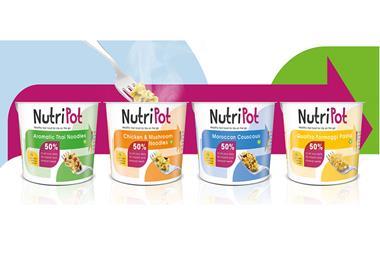
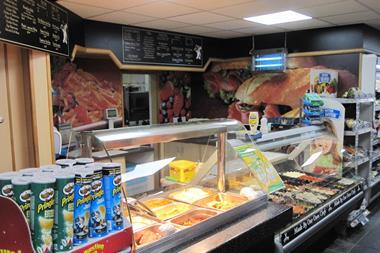
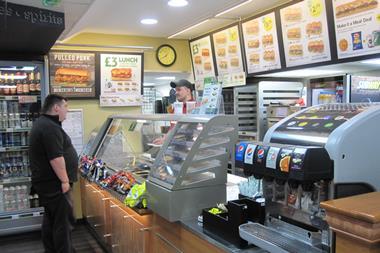
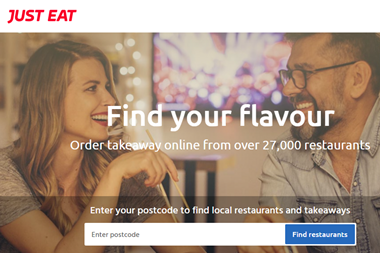
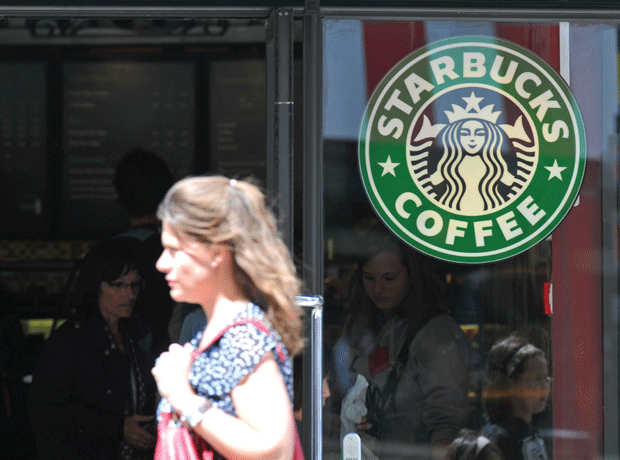

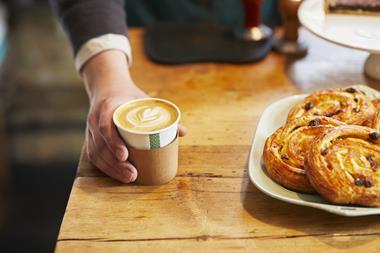




No comments yet